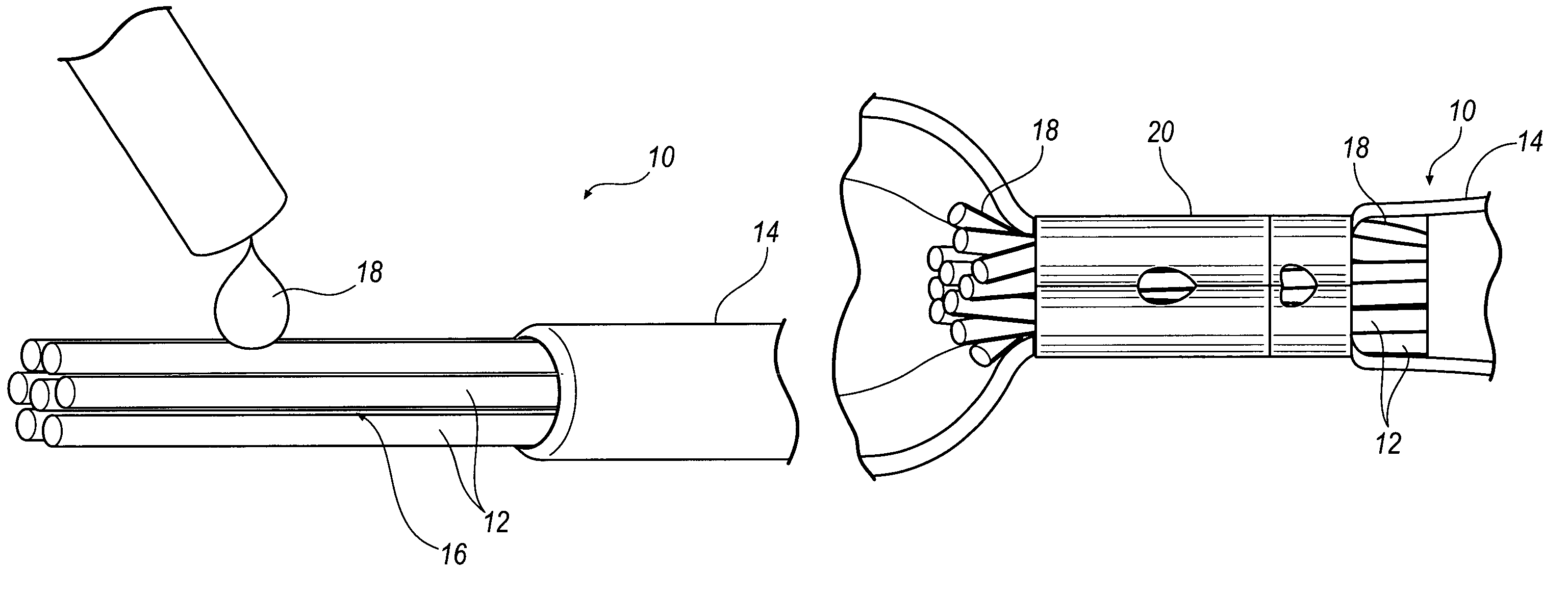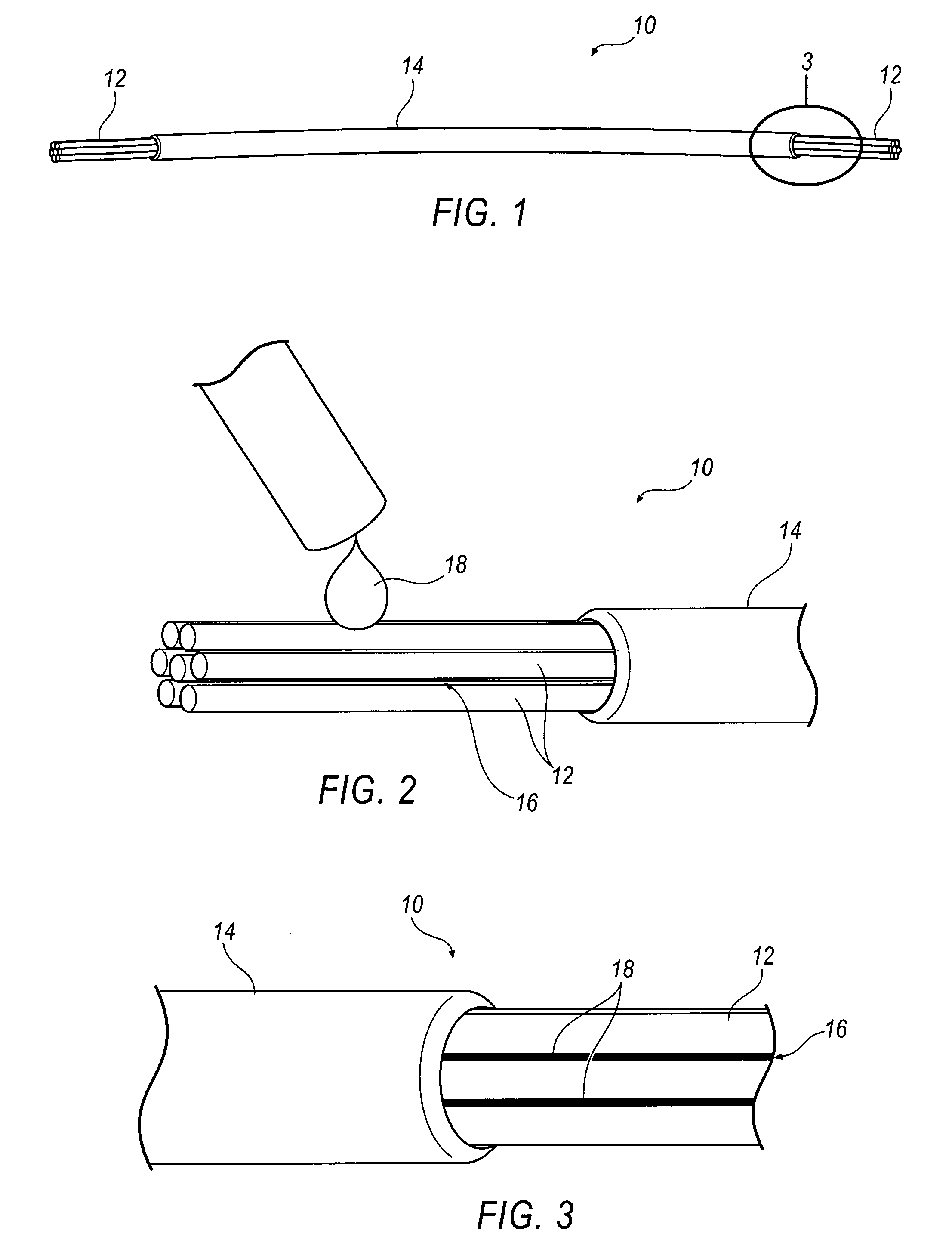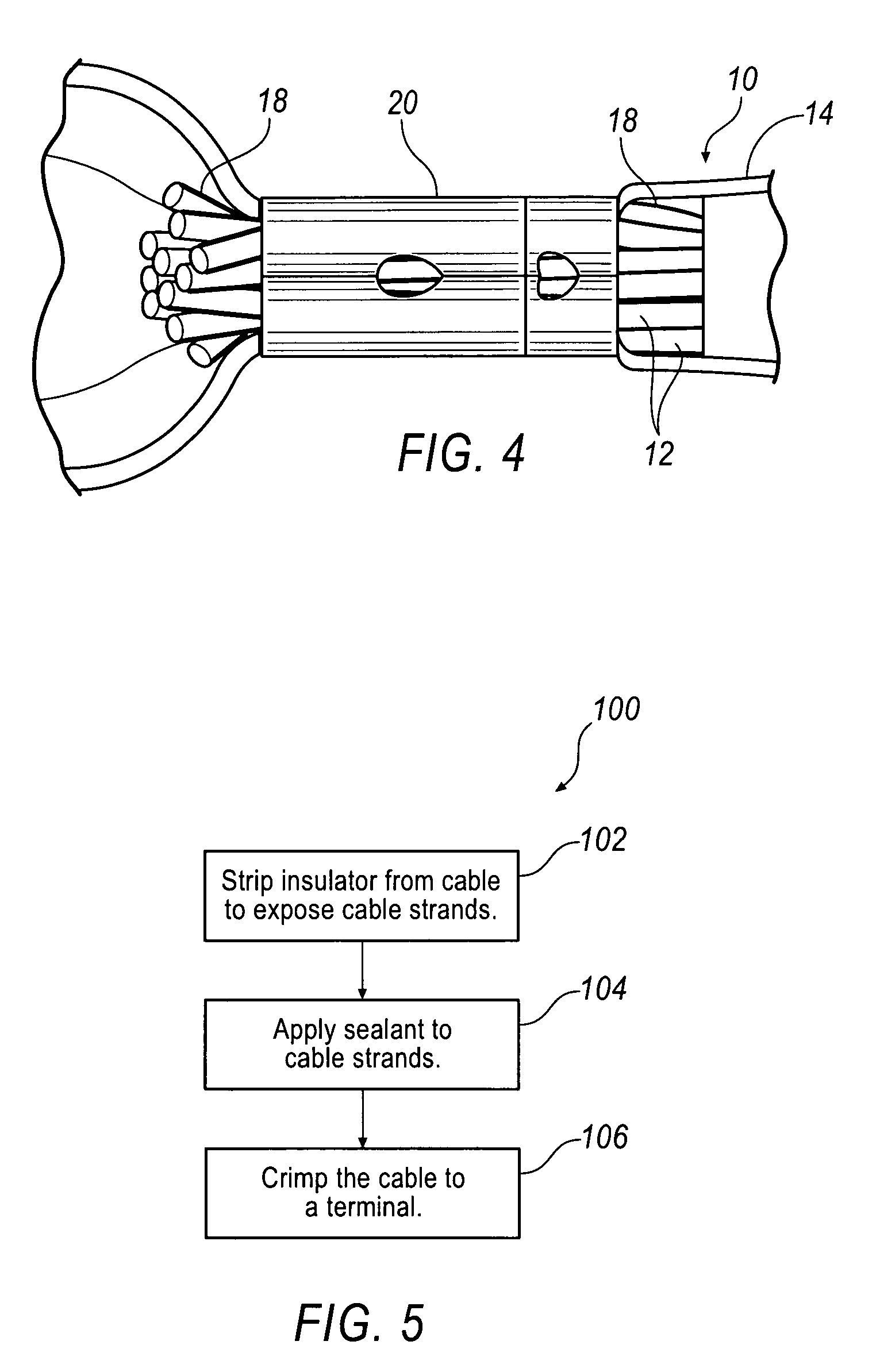Sealed cable and terminal crimp
a terminal crimp and sealing cable technology, applied in the direction of insulated conductors, cables, coupling device connections, etc., can solve the problems of cable corrosion faster, aluminum-based cables crimped to copper alloy or other electrical terminals are also susceptible to galvanic corrosion, and localized pitting and crevice corrosion
- Summary
- Abstract
- Description
- Claims
- Application Information
AI Technical Summary
Benefits of technology
Problems solved by technology
Method used
Image
Examples
Embodiment Construction
[0011]A cable includes a plurality of cable strands disposed inside an insulator. The insulator is stripped so that the cable strands are at least partially exposed. A sealant is applied to the cable strands, and the sealant is drawn under the insulator and fills in gaps between the cable strands by capillary action. Capillary action is the ability of the cable strands and insulator to wick the sealant from one place to another. Specifically, capillary action may cause the sealant to wick from one end of the cable to another end. Alternatively, capillary action may simply cause the sealant to wick from one end of the cable to at least partially under the insulator. Accordingly, the sealant is able to coat more of the cable strands and further protect the cable strands from corrosion. Additionally, filling the gaps between the cable strands with the sealant prevents the ingress of corrosive liquids.
[0012]FIG. 1 illustrates an exemplary cable 10 that includes a plurality of aluminum-b...
PUM
| Property | Measurement | Unit |
|---|---|---|
| length | aaaaa | aaaaa |
| corrosive | aaaaa | aaaaa |
| conductivity | aaaaa | aaaaa |
Abstract
Description
Claims
Application Information
 Login to View More
Login to View More - R&D
- Intellectual Property
- Life Sciences
- Materials
- Tech Scout
- Unparalleled Data Quality
- Higher Quality Content
- 60% Fewer Hallucinations
Browse by: Latest US Patents, China's latest patents, Technical Efficacy Thesaurus, Application Domain, Technology Topic, Popular Technical Reports.
© 2025 PatSnap. All rights reserved.Legal|Privacy policy|Modern Slavery Act Transparency Statement|Sitemap|About US| Contact US: help@patsnap.com



